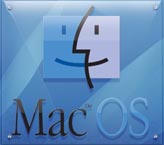Simple to use, but higher priced: 25 years of the Mac
 Cupertino, California - It was a historic event. On January 24, 1984, Apple co-founder Steve Jobs introduced the first Macintosh computer. The highlight was the machine's revolutionary graphical user interface.
Cupertino, California - It was a historic event. On January 24, 1984, Apple co-founder Steve Jobs introduced the first Macintosh computer. The highlight was the machine's revolutionary graphical user interface.
"It allowed lay users to work with computers for the first time," explains Andreas Stolte from the Heinz Nixdorf Museums Forum in Paderborn, Germany. Yet, it was ultimately the PC and MS-DOS, and their successor Windows, that won the next battle in the operating system war, not the Mac.
That's because Microsoft licensed its operating system, while Apple did not. With licenses, hardware makers were free to reconfigure their computers to meet their needs, and package the new creations with Windows.
"This allowed Windows to spread rapidly and achieve market dominance," Stolte says. Perhaps this difficult history is precisely what Apple needed to arrive where it is now, tremendously successful 25 years after the first Mac was presented.
While Apple computers and the Mac OS (operating system) can be precisely tailored to one another because they come from one source, the PC suffers under a much higher error threshold because of the seemingly countless possible combinations of hardware and software.
Over the years, this has led many Windows users to jump ship, fleeing the many crashes and compatibility problems associated with the PC for the relative stability of the Mac camp. Another draw: hardly any viruses threaten the Mac OS - although this may be due to the relatively low market share of the OS compared to Windows.
That last fact could be changing: Apple recently released its first quarter results for 2009, and the company claims to have produced the best quarterly results in terms of revenues and profits in its history. More than 2.5 million Macs were delivered during that period, a climb of 9 per cent in sales over the comparable period a year ago.
Many buyers select a Mac in the hope of acquiring a relatively robust, stable, and long-lived product, speculates Walter Mehl from Munich-based Macwelt magazine.
"Macs are also simply easier to use than a PC," the expert finds. This has something to do with the intuitive design of the user interface, Mehl suggests. "You simply understand things easier," he says.
Yet Walter Mehl, himself a Mac user since the mid 1990s, is not blind to the Mac's flaws. Anyone who enjoys tinkering with their own hardware configurations, for example, will encounter strict limitations with the Mac.
"Macs just aren't designed for simple swapping out of a hard drive," Mehl says. Yet he doesn't agree with the frequently repeated argument that there's not enough software for the Mac. The major exception is tax software, which is lacking for the platform in many countries.
"One problem with the Mac is its high price," says Andreas Stolte from the Heinz Nixdorf Museums Forum.
At 500 dollars, the relatively no-frills Mac mini is on the lower end of the price spectrum, with the MacBook, Apple's most affordable laptop, ringing in at 950 dollars. A fully equipped desktop computer from Apple starts at 1000 dollars.
"That's a lot of money" Mehl admits, which is one of the reasons why he doesn't recommend a Mac for everyone. It's like buying cutlery, he feels: whether it costs 3.99 or 70 dollars, whatever knife you buy can cut.
"You don't notice the difference until you have to work with it every day," he says. (dpa)